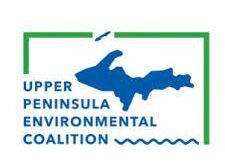HANCOCK: Beach Guard, the Bathing Beach Information System that provides Michigan residents with bathing beach water quality information.
The Western UP is finally experiencing the warm weather that prompts many local residents to visit a beach to beat the heat. You may wonder, “Is the water safe for swimming?” The Western Upper Peninsula Health Department wants to remind local residents that they can find information about beach water quality at the Michigan Department of Environmental Quality’s Beach Guard website http://www.deq.state.mi.us/beach/. If water quality advisories are issued by the health department, the information will be posted on the Beach Guard website and displayed in a sign at the affected beach.
Bathing beach water quality advisories protect swimmers from exposure to E. coli bacteria. Western U.P. Health Department currently tests water quality weekly at 18 public bathing beaches across Gogebic, Ontonagon, Baraga, Houghton, and Keweenaw counties. Water samples are tested for the indicator organism E. coli and quality parameters such as water turbidity, temperature, and possible contamination sources are investigated at each beach.
According to the United States Environmental Protection Agency (EPA), the presence of E. coli bacteria in large numbers indicates that fecal contamination has occurred and harmful pathogens may be present in the water. Any beach with an unacceptable E. coli level is closed to swimming by the Health Department in order to protect public health until the contamination has cleared.
According to Lynne Madison, the Health Department’s environmental health division director, “higher than normal E. coli numbers can be expected after heavy rainstorms, especially if large numbers of geese and gulls frequent a beach. Rainstorms wash bird droppings and other contaminants from the beach into the lake water, increasing the amount of E.coli in the water. Storm drains and creeks or streams located near a beach are also sources of E. coli contamination.” Symptoms of exposure to E. coli include gastrointestinal problems such as nausea and diarrhea.
Water bodies with large numbers of ducks, geese, and snails also provide habitat for the flatworms that cause swimmer’s itch. July and August are typically the months the Health Department begins receiving complaints about swimmer’s itch. “When we receive a complaint from beach users who have swimmer’s itch, Health Department staff post warning signs at the beach and notify the beach owner,” Madison said. “So reporting swimmer’s itch to the health department is important.”
Swimmer’s itch, also known medically as cercarial dermatitis, is caused when tiny larval flatworms enter a bather’s skin while the person is swimming. The flatworm is unable to enter human blood vessels, and therefore, dies in the skin. Some people can have an allergic reaction to the parasite and suffer itchy, redden, raised areas on their skin with symptoms lasting for about a week. The condition is self-limiting because the immune system takes care of the intruders and the itchy rash simply disappears after that. However, at the peak of symptoms, corticosteroid cream and an oral antihistamine drug may be needed to control the itch.
The usual hosts for the flatworms that cause swimmer’s itch are ducks, geese, and snails. The flatworms also have a free-swimming stage in fresh water lakes. During July and August, swimmers can be exposed to large numbers of these flatworms along shorelines. Swimming in areas with large water fowl populations and snails should be avoided. Additional information about swimmer’s itch can be found on the Health Department’s website www.wuphd.org.
Weekly beach inspections and water quality monitoring is being conducted by the Health Department at the following Western U.P. public beaches and the test results may be viewed on the MDEQ’s beach guard website at http://www.deq.state.mi.us/beach/.
Baraga County:
L’Anse Waterfront Park
Gogebic County:
Gogebic County Beach on Lake Gogebic
Lake Gogebic State Park
Sunday Lake Campground and Beach
Houghton County:
Agate Beach
Chassell Beach
Dollar Bay Beach
Hancock City Park Beach
Houghton City Beach
Lake Linden Park
McLain State Park
Twin Lakes State Park
Keweenaw County:
Eagle Harbor Beach
Eagle River Beach
Ontonagon County:
Bergland Beach on Lake Gogebic
Ontonagon Township Park
Ontonagon County Park on Lake Gogebic
Porcupine Mountain State Park
Western U.P. Health Department provides public health services to residents in Houghton, Keweenaw, Baraga, Ontonagon, and Gogebic counties from its offices in Hancock, L’Anse, Ontonagon and Bessemer.
 Keweenaw Report Your Source for Local News and Sports
Keweenaw Report Your Source for Local News and Sports






